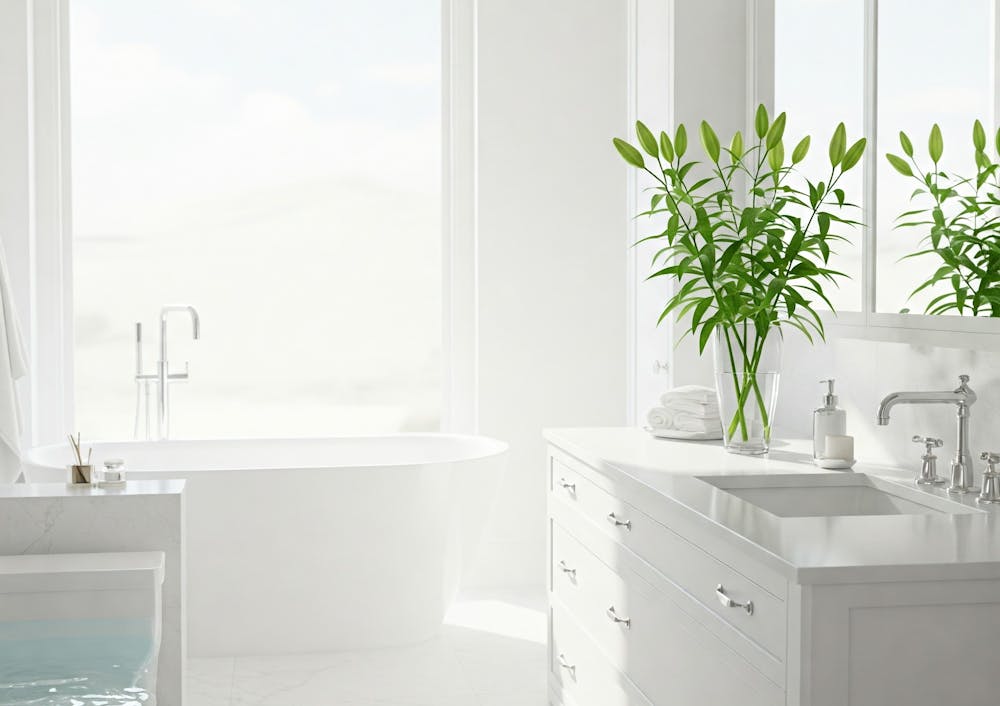When it comes to designing a bathroom that feels both modern and timeless, nothing quite compares to the natural elegance of a white oak bathroom vanity. These stunning vanities are more than just functional furniture—they’re statement pieces that elevate the entire aesthetic of your space. But why is white oak such a sought-after material for bathroom vanities in the U.S.? And how does it stack up against other options? Let’s dive into the beauty, benefits, and smart buying tips surrounding this popular choice.
Why Choose a White Oak Bathroom Vanity?
White oak has become a favorite among interior designers and homeowners for its unique blend of durability, visual appeal, and versatility. Here’s why this wood stands out:
1. Natural Beauty
White oak has a gorgeous grain pattern and light golden hue that adds warmth to any bathroom. It works beautifully with a variety of finishes—from natural wood stains to painted surfaces—offering a high-end look without being flashy.
2. Strong and Durable
White oak is a hardwood known for its strength. It’s denser and more water-resistant than many other types of wood, making it a fantastic choice for a humid environment like a bathroom.
3. Timeless Appeal
Unlike trendy materials that can feel dated in a few years, white oak has been used in cabinetry and furniture for centuries. A white oak vanity will maintain its charm and increase the value of your home over time.
The Most Popular Woods for Bathroom Vanities
Wood is a classic material for bathroom vanities, and for good reason. Let’s take a quick look at the most common wood types and how they compare:
| Wood Type | Durability | Water Resistance | Appearance | Popularity |
| White Oak | ★★★★★ | ★★★★☆ | Light, grainy, elegant | Very High |
| Maple | ★★★★☆ | ★★★★☆ | Smooth, light tone | High |
| Walnut | ★★★★☆ | ★★★☆☆ | Rich, dark, luxurious | Medium |
| Cherry | ★★★☆☆ | ★★★☆☆ | Reddish-brown, warm | Medium |
| MDF/Plywood | ★★☆☆☆ | ★★☆☆☆ | Painted, lacks character | Low |
White oak stands out for its perfect balance of beauty, water resistance, and strength—ideal for the daily use your bathroom vanity gets.
Pros and Cons of a White Oak Vanity
Let’s break it down:
✅ Pros:
- Highly durable – Resistant to dings, scratches, and moisture.
- Beautiful natural appearance – Adds texture and visual interest.
- Customizable – Easy to stain, seal, or leave natural.
- Eco-friendly – A renewable resource when sourced responsibly.
- Long-lasting – Can serve you for 15–25 years with proper care.
❌ Cons:
- More expensive – Quality comes at a price.
- Heavier – Installation might require more effort.
- Needs occasional sealing – To maintain water resistance and color.
Wood vs. Other Materials: Why Go Natural?
Choosing a wooden vanity over synthetic materials like MDF or laminate has several benefits:
- Better Longevity: Real wood, especially hardwood like white oak, lasts significantly longer.
- Repairable: Scratches or dings can often be sanded out and refinished.
- Higher Resale Value: Wood vanities are considered premium and boost home value.
- Better for the Environment: Fewer chemicals and less waste involved.
In short, wooden bathroom vanities are an investment—but one that pays off in beauty, performance, and resale appeal.
Lifehacks for Keeping Your White Oak Vanity Beautiful
Want your vanity to last decades? Use these smart care tips:
- 🧼 Wipe up splashes right away – Moisture is the enemy of all wood, even sealed oak.
- 🌬️ Ensure proper ventilation – A good bathroom fan prevents excess humidity buildup.
- 🪵 Use a gentle wood cleaner – Avoid harsh chemicals that strip the finish.
- 🧴 Re-seal every few years – A light coat of sealant protects against water damage.
- 🔧 Install soft-close hardware – Reduces stress on doors and drawers, helping them last longer.
What Are the Best Vanity Colors?
Color choice can dramatically affect the vibe of your bathroom. Here are some of the most timeless and trending vanity colors in the U.S.:
| Color | Vibe | Works Best With |
| Natural White Oak | Warm, organic, spa-like | White tiles, gold or black hardware |
| Matte Black | Bold, modern, sleek | White counters, minimalist decor |
| Navy Blue | Classic with a twist | Marble counters, brass fixtures |
| Soft Gray | Neutral, calm, clean | Any style, especially farmhouse |
| Forest Green | Earthy, rich, trendy | Matte black or brass hardware |
White oak pairs exceptionally well with all these colors due to its subtle undertones. You can keep it natural for a rustic look or stain it to match any palette.
FAQs: White Oak Bathroom Vanity
How long does a white oak vanity last?
With proper care, a white oak bathroom vanity can last 15 to 25 years or more.
Is white oak better than MDF for bathrooms?
Yes. White oak is more durable, moisture-resistant, and repairable than MDF. It also looks much better in the long run.
Can I paint a white oak vanity?
Absolutely! While many prefer the natural look, you can paint or stain white oak easily. Just make sure to seal it properly afterward.
Does white oak turn yellow over time?
Not if properly sealed. Using a clear matte polyurethane or oil finish helps maintain its natural color and prevents yellowing.
How often should I seal my wood vanity?
Depending on use and exposure, reapply sealant every 2–3 years for optimal protection.
Final Thoughts
A white oak bathroom vanity is more than just a stylish addition—it’s a smart investment in durability, natural beauty, and timeless design. Whether you’re remodeling your master bath or upgrading a guest powder room, choosing white oak means you’re getting a piece that can stand the test of time while elevating your space.
So go ahead—embrace the warmth, texture, and reliability of a white oak vanity, and create a bathroom you’ll love for years to come.


